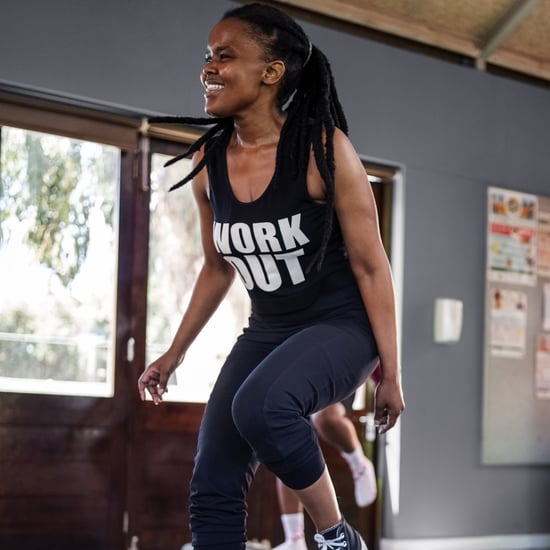Best Home Remedies For Sore Muscles
Sore Muscles? Here Are Some Home Remedies to Try ASAP

News flash: if your muscles feel sore a day or two after you work out, you're experiencing delayed onset muscle soreness (DOMS). Treating it is complicated because there's no surefire cure — and there are varying studies on which methods of recovery work best — but you can help tend to the discomfort of DOMS as it runs its course.
What Is DOMS?
DOMS occurs when there are microtears within the muscle that lead to a gradual inflammatory process over the first 24 to 48 hours after an intense workout, Tedd Keating, PhD, associate professor of kinesiology at Manhattan College, told POPSUGAR in a previous interview. Some professionals believe, even though it hasn't been scientifically proven that the microtears and inflammation are primarily the result of eccentric movements like squats or deadlifts that elongate the muscles in a controlled fashion. Additionally, when you do an exercise that you haven't done before or increase your reps, you're more likely to experience DOMS.
Home Remedies to Treat DOMS
Some recovery methods that have shown positive results — professional massage, cold water immersion, etc. — aren't always practical. So, here's what you can do at home.
Ice and Heat
There's conflicting research that ranks ice over heat (and vice versa), and there's also research that supports both as useful treatment methods. You can read more about that here. Though some studies found that ice impedes recovery, Keating said that it can be useful for manageing pain. Physical therapist Tyler Denn-Thiele, DPT, CSCS, told POPSUGAR in a previous interview that heating pads may help with discomfort temporarily as well. And as physical therapist Karen Litzy, DPT, said, "If it makes you feel good, by all means, go for it."
Find These Things in Your Kitchen
Litzy and Keating pointed to tart cherry juice as a means to minimize muscle soreness, as indicated in some small studies. Litzy added that drinking protein-rich chocolate milk after exercise has shown promising results based on a small study. NASM-certified personal trainer and head coach at the workout app Ladder, Stan Dutton told POPSUGAR that the active ingredient in turmeric, curcumin, has a moderate impact on improving soreness. Nutrition is key here, so make sure you're eating a balanced diet of enough protein and carbs and drinking a generous amount of water. (You can also take ibuprofen.)
Active Recovery, Foam Rolling, and Sleep
Get moving! One piece of good news is that, in a meta-analysis of nearly 100 studies, active recovery was one of the methods that also seemed to have the most effect on DOMS. Options for active recovery include walking, stretches that involve consistent movement (try this 30-minute power yoga flow), cycling, or light lifting.
Due to something called the "repeated bout effect," repeating a workout on sore muscles will eventually become easier. However, Denn-Thiele advised that you should be careful about how much you do on those sore muscles. If soreness is greater than a five out of 10 and does not go away with a warmup, he recommends trying a different kind of workout. Foam rolling, too, is a form of self-massage that may temporarily help with soreness because it increases blood flow to the muscles. Lastly, make sure you're getting enough sleep — seven to eight hours per night — both Denn-Thiele and Litzy agreed.
Important Note on Red Flags
These experts stressed the importance of knowing the difference between soreness and pain. Being sore, Dutton explained, is uncomfortable and can sometimes last for days, but pain can last even longer and is "more acute." So, contact a doctor if muscle soreness becomes painful, especially if it radiates down your legs. Other red flags to look out for are significant muscle atrophy, profound weakness, and bladder or bowel dysfunction, Litzy said. Cola-coloured urine may be a sign of rhabdomyolysis, which is a rapid breakdown of skeletal muscle tissue and could lead to kidney failure if left untreated.
For more in-depth advice on how to treat specific muscle groups, see below:
Guidelines for easing DOMS are pretty much the same no matter where you experience it on your body, though there are certain things you can try — like foam rolling for your legs and active stretches for your back — that may be specific to that muscle group. Remember to monitor your soreness, but don't be afraid to keep working out.








